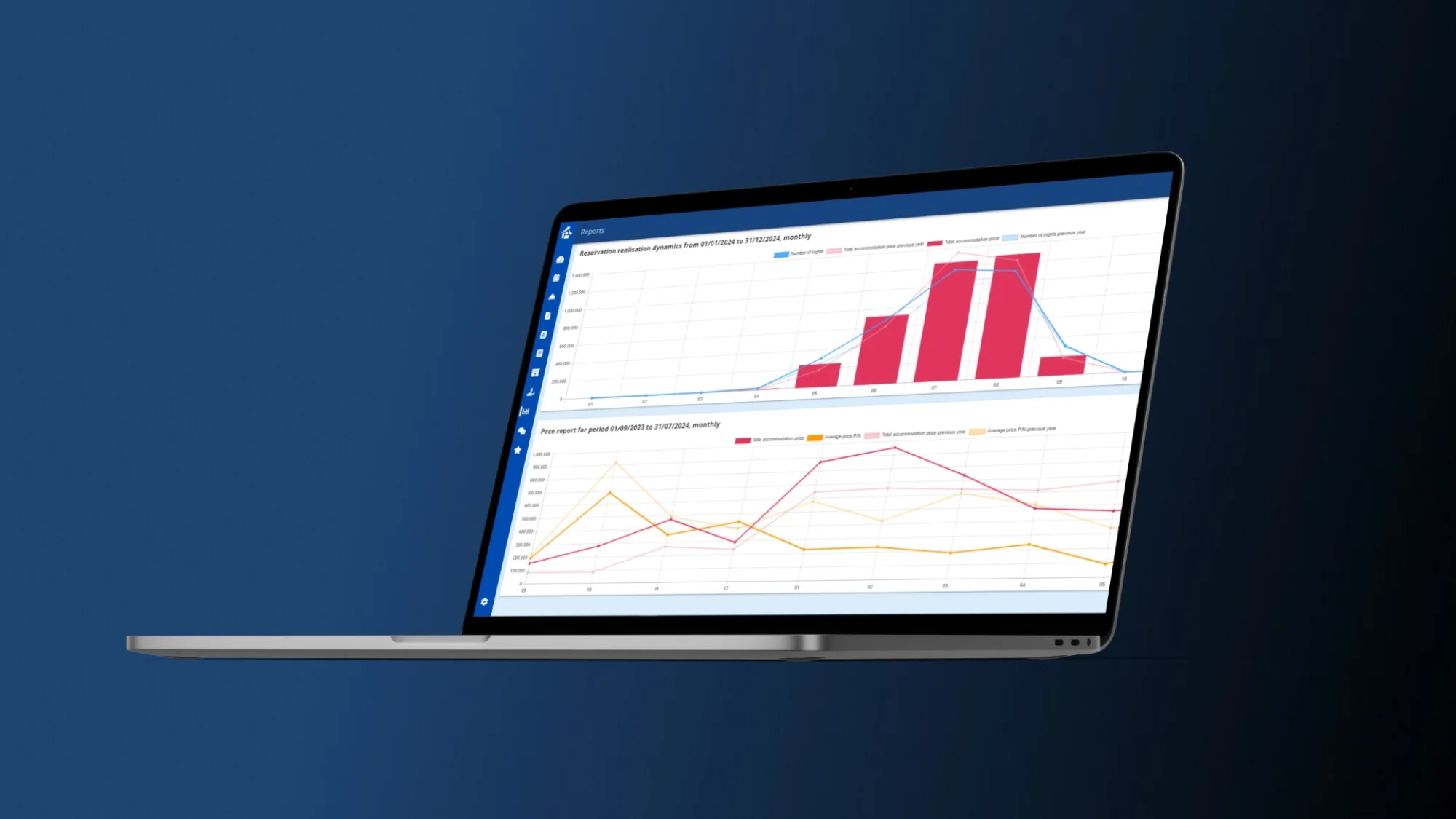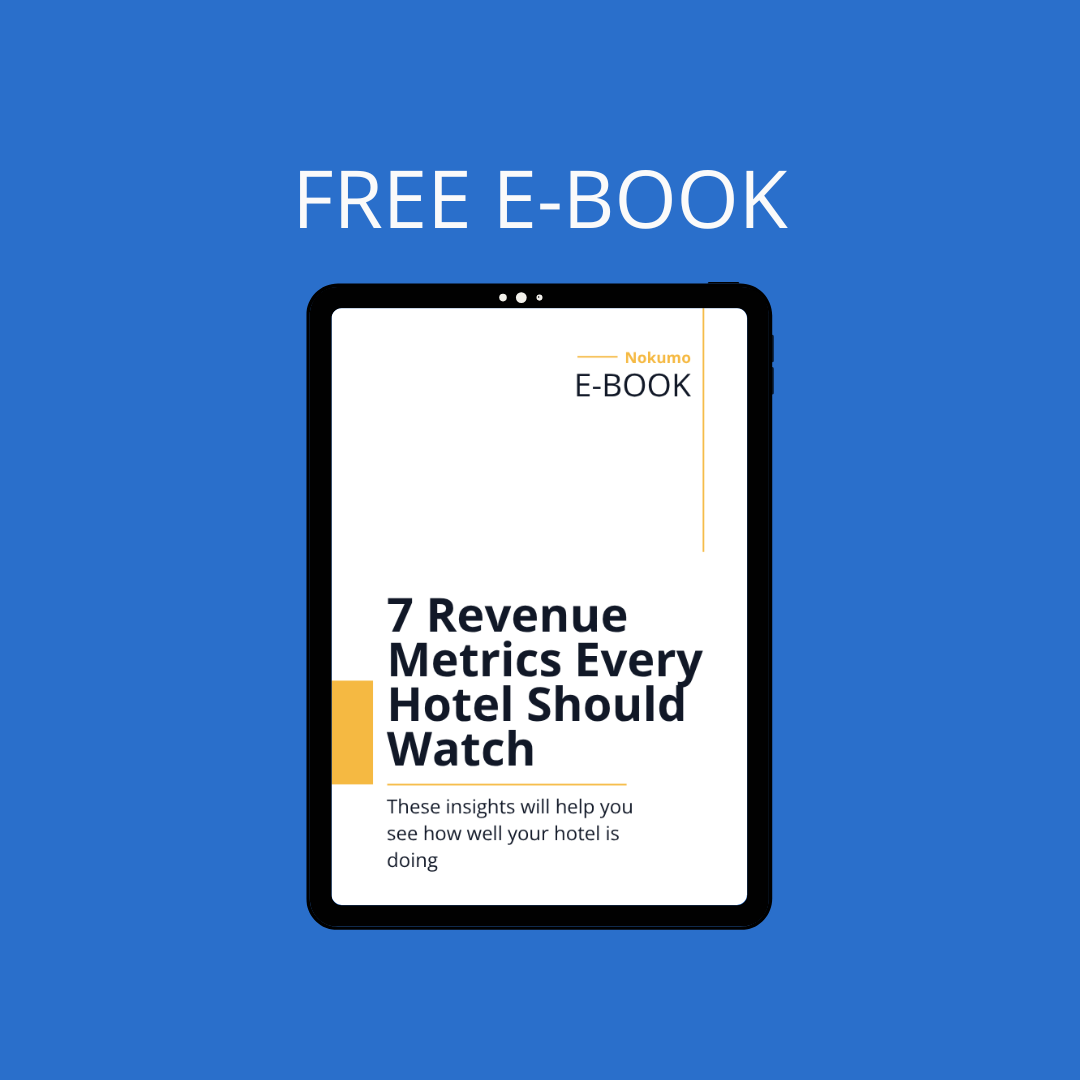How to Use ADR to Increase Your Hotel’s Revenue: Practical Tips
Practical strategies to boost your hotel’s Average Daily Rate, improve profitability, and stay competitive through data-driven pricing and value-enhancing guest experiences

In today's competitive hospitality landscape, optimizing your hotel's Average Daily Rate (ADR) is crucial for maximizing revenue and profitability. While many hoteliers focus solely on filling rooms, the key to sustainable success lies in understanding how to balance occupancy with rate optimization. This comprehensive guide provides practical strategies to leverage ADR effectively and boost your hotel's financial performance.
Understanding ADR and Why It Matters
Average Daily Rate measures the average price at which your hotel rooms are sold over a specific period. The calculation is straightforward: divide your total room revenue by the number of rooms sold. For example, if your hotel generates €10,000 in room revenue from selling 100 rooms, your ADR would be €100.
However, ADR's importance extends far beyond simple mathematics. This metric directly impacts your hotel's bottom line and serves as a competitive benchmark in the market. Many hoteliers make the mistake of prioritizing occupancy over rate, but filling rooms at discounted prices can actually decrease overall profitability. A strategic approach to ADR allows you to maximize revenue even with slightly lower occupancy, as higher room rates often translate to better profit margins and reduced operational costs per occupied room.
The relationship between ADR and profitability isn't always linear. Selling fewer rooms at higher rates often results in lower variable costs for housekeeping, amenities, and utilities while potentially delivering higher profit margins. The goal isn't necessarily to achieve 100% occupancy but rather to find the sweet spot where your combination of occupancy and rate yields the highest profit.
Essential Strategies for ADR Improvement
Setting the Foundation with Competitive Base Rates
Your base rate strategy forms the foundation of successful ADR optimization. Setting competitive base rates requires analyzing multiple factors including competitor pricing, historical performance data, and current market conditions. A Central Reservation System (CRS) can provide invaluable real-time insights into market dynamics, enabling you to react quickly to changing consumer demands and competitive pressures.
Understanding your hotel's position in the market is crucial for effective base rate setting. This involves not just looking at competitors' published rates but understanding the total value proposition each property offers. Your base rates should reflect your hotel's unique value while remaining competitive enough to attract bookings.
Implementing Dynamic Pricing Models
Static pricing models are increasingly obsolete in today's fast-paced hospitality environment. Dynamic pricing allows your hotel to adjust rates in real-time based on demand patterns, competitor pricing, and market conditions. This approach enables you to maximize revenue during high-demand periods while maintaining competitive rates during slower times.
Effective dynamic pricing requires robust data analysis, including historical booking patterns, upcoming local events, competitor rate movements, and current booking pace. Modern revenue management systems can automate much of this process, using sophisticated algorithms to suggest optimal pricing adjustments throughout the day. The key is ensuring your front desk and sales teams understand the strategy to effectively communicate rate changes to guests and maintain rate integrity.
Optimizing Room Categories and Upselling
Room type optimization plays a significant role in enhancing your hotel's ADR. Creating value-based room categories that appeal to different guest segments can justify premium pricing. Consider restructuring your room categories to include high-demand amenities like complimentary airport shuttles, free breakfast, or exclusive access to hotel facilities.
Upselling represents one of the most immediate opportunities to boost ADR. Training your front desk staff to highlight premium room benefits during check-in, combined with strategic pre-arrival communications, can significantly increase upgrade revenue. The key is focusing on features that match guest preferences rather than pushing generic upgrades.
Leveraging Strategic Pricing Techniques
Length of Stay Restrictions
Managing length of stay restrictions effectively can dramatically impact your ADR during various demand periods. Minimum Length of Stay (MinLOS) requirements during high-demand periods ensure optimal revenue capture by preventing single-night bookings when you could sell multiple nights at premium rates. Conversely, Maximum Length of Stay (MaxLOS) restrictions protect your revenue potential by preventing guests from booking extended stays at discounted rates that span into high-demand periods.
These restrictions require careful implementation with clear communication to avoid guest dissatisfaction. The goal is revenue optimization while maintaining positive guest relationships.
Seasonal and Event-Based Pricing
Understanding your market's seasonal patterns and local events is crucial for ADR optimization. During peak seasons or special events, increased demand allows for premium pricing, but this requires advance planning and strategic inventory management. Rather than simply raising rates, consider creating event-specific packages that provide additional value while commanding higher prices.
During low seasons, resist the temptation to drastically cut room rates. Instead, focus on creating value-added packages that maintain your ADR while offering guests additional amenities or services. This approach preserves rate integrity while attracting price-conscious travelers.
Technology and Data-Driven Decision Making
Modern ADR optimization relies heavily on technology and data analytics. Customer Relationship Management (CRM) systems enable deeper guest relationships and personalized pricing strategies, while competitive rate shopping tools help maintain optimal market positioning. Demand forecasting models that incorporate local events, seasonal patterns, and booking pace provide the foundation for strategic rate adjustments.
Data analytics has revolutionized hotel pricing strategies, enabling more precise and profitable rate decisions. By analyzing historical booking patterns, guest behavior, and rate sensitivity across different market segments, you can identify opportunities for strategic rate adjustments. This data-driven approach ensures your revenue management strategy is optimized for maximum profitability rather than relying on intuition alone.
Beyond ADR: Understanding the Complete Revenue Picture
While ADR is crucial, understanding related revenue metrics provides a more comprehensive view of your hotel's performance. Revenue Per Available Room (RevPAR) measures your ability to fill available rooms at optimal rates, while Total Revenue Per Available Room (TRevPAR) includes all revenue streams, providing insights into your property's complete revenue-generating capability.
More advanced metrics like Gross Operating Profit Per Available Room (GOPPAR) and Net Revenue Per Available Room (NRevPAR) offer deeper insights into actual profitability. NRevPAR is particularly valuable as it accounts for distribution costs, providing a clearer picture of net revenue retention across different booking channels.
Distribution Channel Strategy
Balancing direct bookings with OTA distribution requires strategic thinking about both revenue and costs. While OTAs provide valuable market exposure, the associated commissions can significantly impact your net ADR. Creating compelling direct booking incentives, implementing robust loyalty programs, and ensuring your website offers competitive rates and packages can drive more profitable direct reservations.
Managing OTA relationships effectively involves understanding the true cost of each booking channel by calculating net ADR after commissions and distribution expenses. This insight allows for informed decisions about inventory allocation and pricing strategies across different channels.
Creating Value That Justifies Premium Rates
Successful ADR optimization ultimately depends on creating genuine value that guests are willing to pay for. This involves enhancing your hotel's overall value proposition through both tangible amenities and intangible experiences. Complimentary services like welcome gifts, free refreshments, or special occasion recognition can create lasting impressions that justify premium pricing.
Personalization represents one of the most powerful tools for commanding higher rates. Using CRM data to tailor experiences to individual guests creates emotional connections that transcend price sensitivity. Whether it's remembering a guest's preference for a specific room type or acknowledging special occasions with thoughtful touches, these personalized elements justify premium pricing while fostering loyalty.
Implementation Strategy for Long-Term Success
Successful ADR optimization requires a systematic implementation approach. Start by establishing clear ADR goals based on your competitive set, market position, and financial objectives. Develop a monitoring system that tracks ADR performance alongside other key revenue metrics, enabling quick identification of trends and opportunities.
Create an implementation timeline that prioritizes quick wins while building toward more complex revenue management strategies. Invest in ongoing team training to ensure everyone understands how their role contributes to ADR performance. Regular strategy reviews based on performance data, market changes, and emerging industry trends ensure your approach remains effective and relevant.
Quick Implementation Checklist:
- Establish baseline ADR and competitive benchmarks
- Implement dynamic pricing capabilities
- Create value-based room categories and packages
- Train staff on upselling techniques
- Develop direct booking incentive programs
- Set up performance monitoring dashboards
Conclusion
Remember, ADR improvement isn't just about raising room rates, it's about creating value that justifies premium pricing. By taking a holistic approach to ADR optimization that combines strategic pricing, value creation, and data-driven decision making, you'll build a sustainable revenue management strategy that drives long-term financial success for your hotel.
Get the Full Revenue Metrics Handbook (Free 12-Page Guide)
Ready to go beyond the basics? Our comprehensive 12-page guide covers all seven critical revenue metrics - including advanced KPIs like RGI, GOPPAR, and NRevPAR that most hotels ignore. You'll get European benchmarks, real calculation examples, and specific performance targets for independent properties. Plus, learn how top hotels use these metrics together to outperform competitors and maximize profitability.
